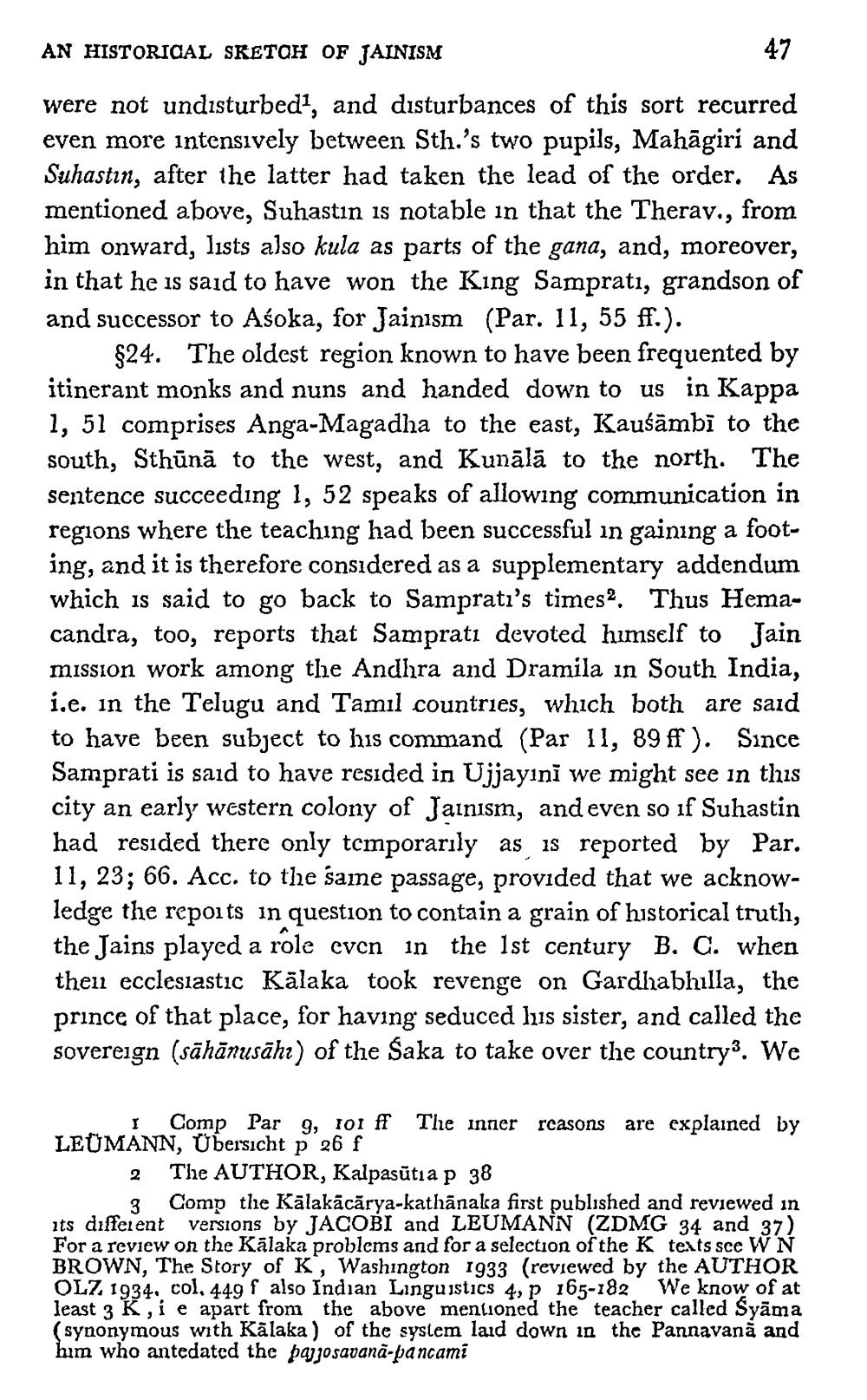________________
AN HISTORICAL SKETCH OF JAINISM
47
were not undisturbed?, and disturbances of this sort recurred even more intensively between Sth.'s two pupils, Mahāgiri and Suhastin, after the latter had taken the lead of the order. As mentioned above, Suhastin is notable in that the Therav., from him onward, lists also kula as parts of the gana, and, moreover, in that he is said to have won the King Sampratı, grandson of and successor to Asoka, for Jainism (Par. 11, 55 ff.).
$24. The oldest region known to have been frequented by itinerant monks and nuns and handed down to us in Kappa 1, 51 comprises Anga-Magadha to the east, Kaušāmbi to the south, Sthūnā to the west, and Kunālā to the north. The sentence succeeding 1, 52 speaks of allowing communication in regions where the teaching had been successful in gaining a footing, and it is therefore considered as a supplementary addendum which is said to go back to Sampratı's times. Thus Hemacandra, too, reports that Sampratı devoted himself to Jain mission work among the Andhra and Dramila in South India, i.e. in the Telugu and Tamil countries, which both are said to have been subject to his command (Par 11, 89 ff). Since Samprati is said to have resided in Ujjayıni we might see in this city an early western colony of Jainism, and even so if Suhastin had resided there only temporarily as is reported by Par. 11, 23; 66. Acc. to the same passage, provided that we acknowledge the reports in question to contain a grain of historical truth, the Jains played a role cvcn in the 1st century B. C. when then ecclesiastic Kälaka took revenge on Gardhabhılla, the prince of that place, for having seduced his sister, and called the sovereign (sāhānusāhr) of the Saka to take over the country3. We
I Comp Par 9, 101 ff The inner reasons are explained by LEUMANN, Übersicht p 26 f
2 The AUTHOR, Kalpasūtia p 38
Comp the Kalakācārya-kathānaka first published and reviewed in its different versions by JACOBI and LEUMANN (ZDMG 34 and 37) For a review on the Kalaka problems and for a selection of the K texts sce WN BROWN, The Story of K, Washington 1933 (reviewed by the AUTHOR OLZ 1934. col. 449 f also Indian Linguistics 4, p165-182 We know of at least 3 K ,i e apart from the above mentioned the teacher called Syāma (synonymous with Kalaka) of the system laid down in the Pannavana and him who antedated the bajosavana-pancami




